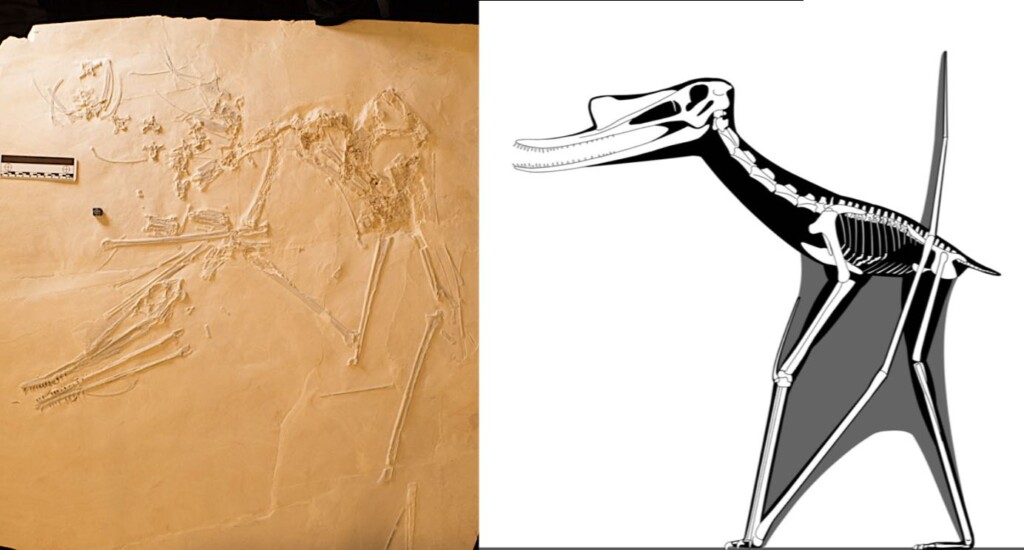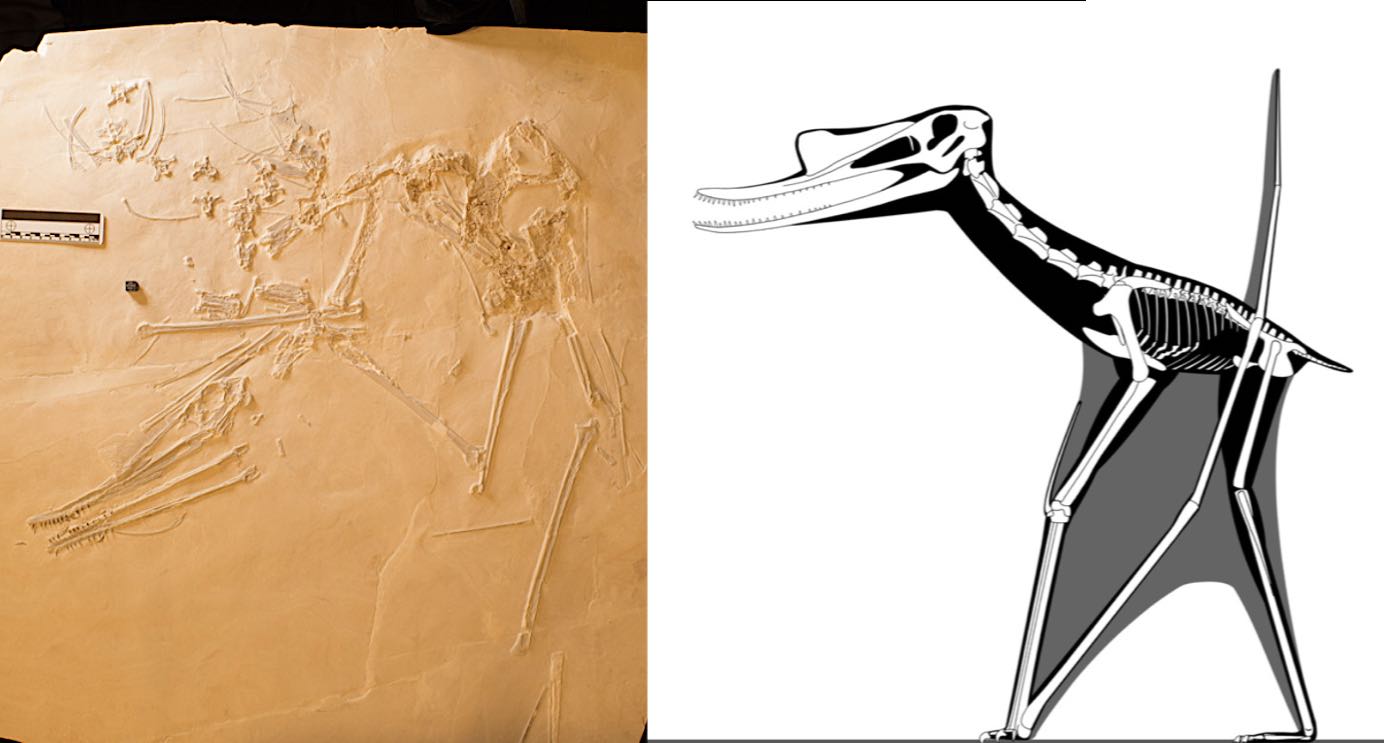
This flying reptile, found in a German rock quarry, wasn’t fully grown when it was embedded in the sediment, but it nevertheless sported a two-meter wingspan and a neatly-parted pompadour reminiscent of Elvis Presley, paleontologists suggest.
In life, it would have waded the shore of shallow seas but might have ventured into estuaries or to lakes. Its long jaw with many small teeth would have been good for grabbing at small fish, shrimp, and other aquatic prey.
It has the biggest crest for its sub-group and is one of the largest pterosaurs from the late Jurassic period.
This beast belonged to a clade of pterosaurs called Ctenochasmatidae, but unlike its closest relatives, it had an expansion at the back of the skull to attach large jaw muscles and give it a stronger bite than many of its contemporaries.
“The animal was nicknamed ‘Elvis’ when the fossil was first unearthed in Bavaria, Germany because of the giant pompadour-like bony crest on its skull,” said study co-author Bruce Lauer of the Lauer Foundation.
Lauer was part of a team of British, American, and German paleontologists who officially named it Petrodactyle wellnhoferi which translates as ‘Wellnhofer’s stone-finger’ honoring legendary German paleontologist Peter Wellnhofer who spent his career working on German pterosaurs, rather than Petrodactyle presleyi.
ANOTHER BIZARRE DINO: New Dinosaur With Rows of Bristles On its Head Like a Toothbrush Has Been Discovered
“Petrodactyle is a member of a group of pterosaurs called the ctenochasmatids that were mostly small filter feeders,” explains Lauer. “The specimen was located in a quarry which is producing scientifically important fossils that provide additional insights into Late Jurassic Pterosaurs.”
It is thought that pterosaurs used their bony crests primarily as sexual signals to other members of the species, but Pterodactyle has by far the largest crest ever seen in a ctenochasmatid.
MORE COOL FOSSIL DISCOVERIES: Fossil Preserves Dinosaur Being Attacked and Eaten by Mammal as Mudslide Entombs them Both
“Big though this crest is, we know that these pterosaurs had skin-like extensions attached to it, so in life Petrodactyle would have had an even larger crest,” said study lead author Dr. David Hone, of Queen Mary University. “[I]t is one of the largest pterosaurs known from the Late Jurassic period.”
It’s bizarre to think that such a giant mouth and fearsome appearance were attached to a filter feeder, not unlike a duck. Giant animals were everywhere during the Jurassic Era, and so presumably, while the strategies to find food were the same as animals we share the Earth with today, the prerequisite for survival was a large body to be able to prey on and defend oneself from the large animals alive during the time.
SHARE This Funny Pterosaur Skeleton With Your Friends…




















